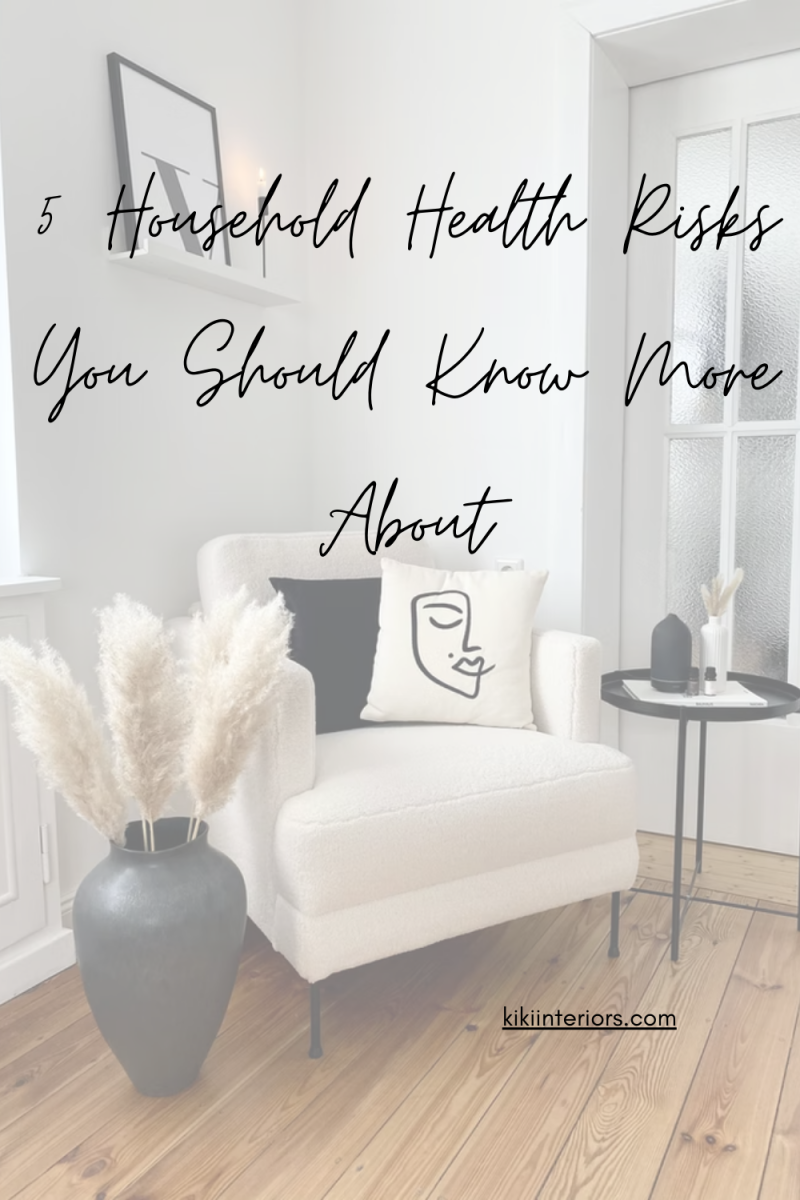
Our home is meant to be our safe haven. It’s the one place where we can relax, unwind and truly feel like we are protected.
However, even if you believe you have a secure home, that doesn’t mean there aren’t hazards that could damage your health and wellbeing. Therefore, it’s essential to know what to watch out for so that you can keep your family safe.
In this article, we are going to talk about five household health risks that could be present on your property.
Let’s get started.
Pests
Bed bugs, mice, spiders, ants, and cockroaches – many pests can be present in your household. While they are generally harmless in small amounts, an infestation can cause many problems.
For instance, termites can eat away at your home’s structure, and the droppings of rats can be full of bacteria and germs. So if you think you’ve got any creepy crawlies hiding in the shadows, you’ll want to reach out to someone like Hama Pest Control to remove them as quickly as possible.

Mold
It’s not uncommon to see a bit of mold in our bathroom, but not all types are the same. Some are hazardous and have been linked to severe health conditions, including respiratory damage.
Stachybotrys, Chaetomium, Aspergillus, Penicillium, and Fusarium are a few examples that you may want to research further. It’s good to know how to identify what is present in your home to prevent it from occurring.
You can read more about the causes of mold here.
Carbon Monoxide
CO (Carbon Monoxide) is known as the silent killer. It’s an odorless and colorless gas that is created by the incomplete combustion of fuels. If a leak occurs in your home, it builds up in your bloodstream without knowledge.
From here, it leads to poisoning, which results in various symptoms such as confusion, chest pain, dizziness, headache, and nausea. Installing a CO detector in your home will ensure you are aware of any level increase.

Asbestos
Asbestos was a building material used in homes until the mid-1970s. Thanks to its resistance to high temperatures, it was thought to be an excellent insulator.
Today, its use has been regulated, as it can cause cancer when breathed into the body. Extreme precautions must be taken if you plan on doing renovations or if you have noticed structural damage.
Lead Paint
Much like asbestos, lead paint was often used in older properties (before 1970) and is extremely dangerous. When the paint chips are consumed, it causes lead poisoning, damaging the brain and kidneys.
If you notice any flaking or disintegrating paint around your home, you must get it tested as soon as possible. If identified, a professional with the correct equipment will need to remove it.
Final Words
As you can see from the above, there are many household health risks that you should be aware of. By knowing the different hazards, you’ll be able to work on making your home a safer place before an accident occurs.



